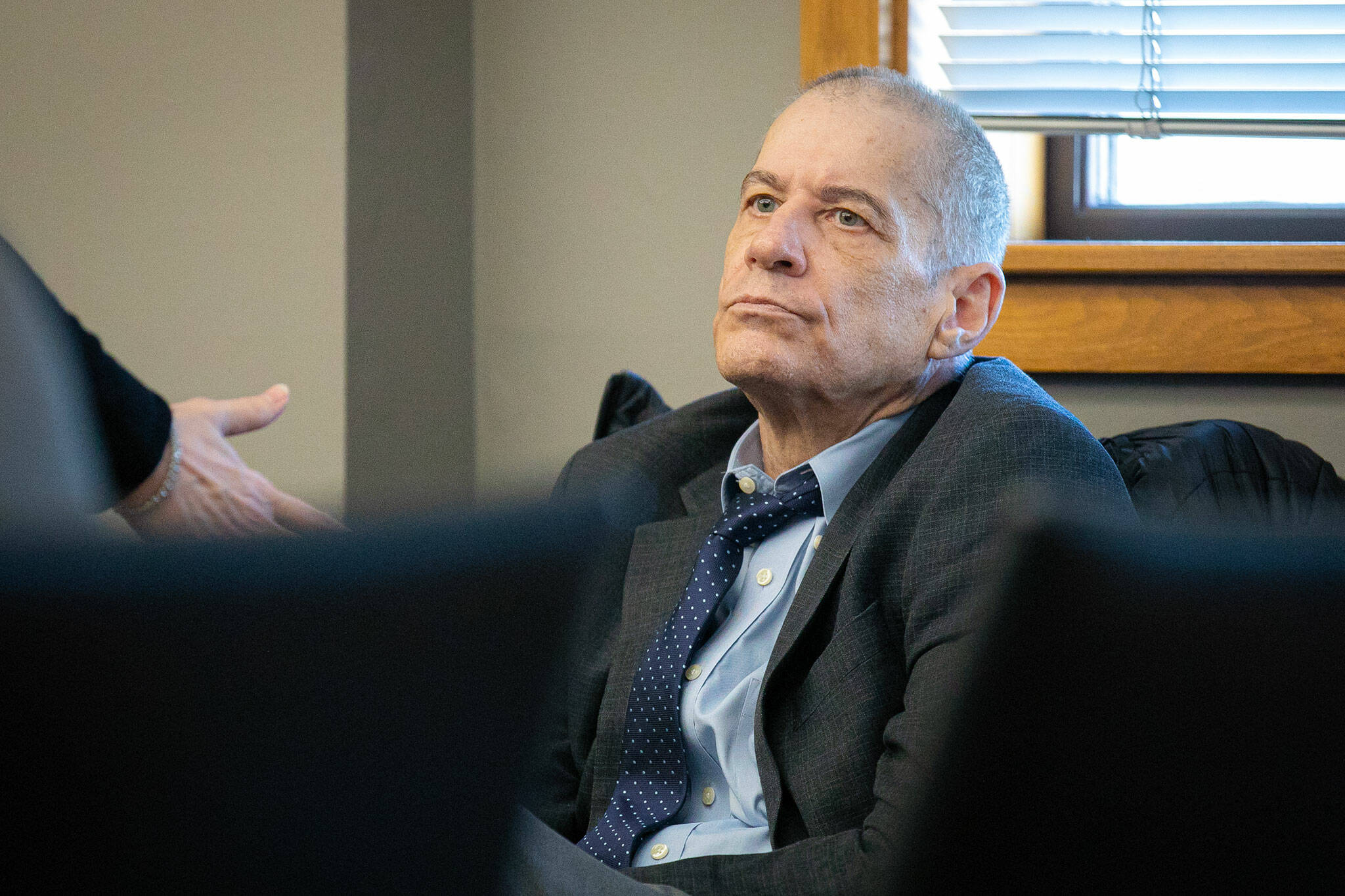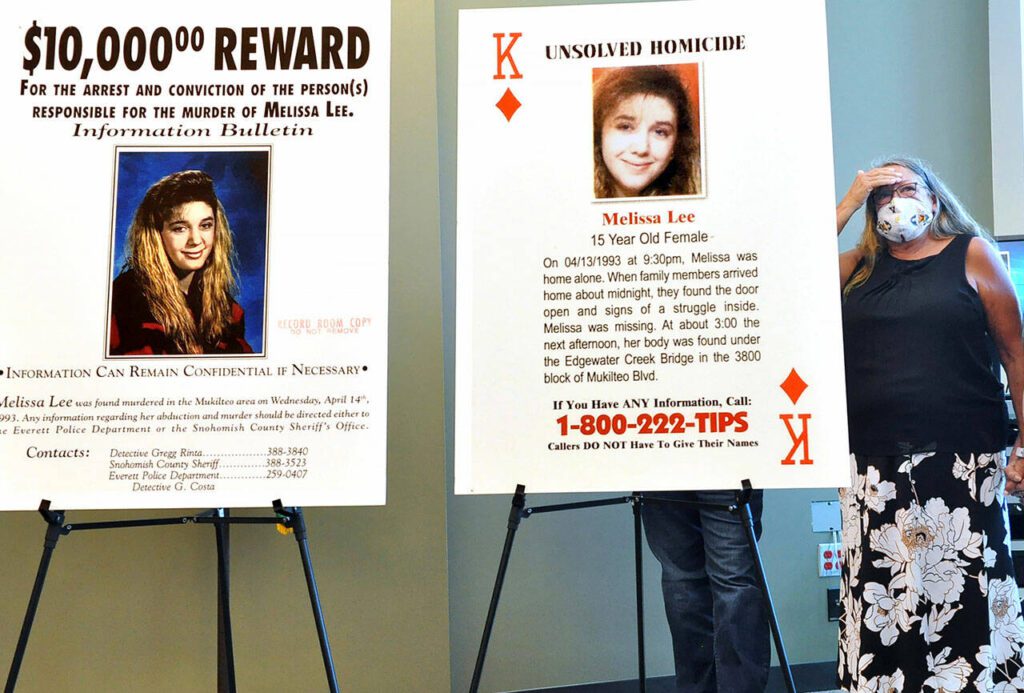EVERETT — Melissa Lee was home alone.
On the night of April 13, 1993, her younger sister, Kelli, was with family on Whidbey Island. Her mother, Sharon, and mother’s boyfriend, Gary McClellan, were out playing darts and singing karaoke.
Knowing she’d be alone, Lee, 15, had asked her friend to spend that Tuesday night at her home in the 19800 block of Filbert Road. But that friend, Krista Stromberg, was babysitting and the parents had asked her to stay a few hours later than expected.
So Lee was alone that night in the quiet neighborhood north of Bothell.
That’s how deputy prosecutor Craig Matheson began his hourlong opening statement Monday in the first-degree murder trial of Alan Edward Dean, the man accused of killing Lee.
“What could possibly go wrong?” Matheson asked the jury. “What went wrong is the stuff of every parent’s nightmare.”
The trial in Snohomish County Superior Court comes almost 31 years after Lee’s killing. The case was long cold.
“Days turned to weeks, weeks turned to months, months turned to years and years turned to decades,” Matheson said, “and still, the individual who strangled Melissa Lee is out there unidentified.”
Then in 2020, after DNA technology and forensic genealogy caught up with the available evidence in the case, authorities arrested Dean in connection with Lee’s death.
It would still take almost four more years to get to this point, as the defendant’s mental health had deteriorated to the point he couldn’t stand trial. In February 2023, after years of treatment in a state psychiatric hospital, a judge found Dean fit for trial.
In her opening statement, public defender Heather Wolfenbarger argued Dean wasn’t the killer. Instead, Lee’s ex-boyfriend killed her, Wolfenbarger said. He had broken up with her just days before she died. And he had placed a “hit” on her life, the defense claimed.
Initially, detectives eyed the ex-boyfriend as a suspect, but he had an alibi. He was reportedly home the night of the slaying. So investigators turned their attention elsewhere.
But the public defender said the alibi doesn’t hold water. The ex-boyfriend’s parents told police he was home. But his new girlfriend reported he was actually at her house.
Judge Millie Judge issued a warrant last week to apprehend the ex-boyfriend, T.J. Peters, so he could testify at the trial. On Thursday, he was booked into the Snohomish County Jail.
Wolfenbarger also disputed the DNA evidence that led investigators to Dean, calling it an “evolving science” and “not perfect.”
“Members of the jury, Alan Dean didn’t kill Melissa Lee,” she said.
A long-cold case
Around 2 a.m. the morning after Lee was killed, the teen’s mother and McClellan got home, according to court papers. It was clear something was amiss. The front door was ajar and the lock broken. The house smelled of chemicals. The living room was in disarray: the coffee table out of position, an ash tray upturned, a pet macaw out of its cage.
The month before her killing, according to court documents, Lee had gone out a couple times with a 35-year-old Boeing mechanic she met on a talk line — a number you could call in the 1990s to connect with strangers. That man reportedly used the name “Michael.” Prosecutors now believe he is the man who sexually abused, strangled and dumped Lee’s body over the Edgewater Creek bridge that marks Everett-Mukilteo city limits.
Matheson told the jury that “Michael” was an alias for Dean, now 66. The deputy prosecutor pointed Dean out to the jury. Seated in a wheelchair, he wore a suit and tie in court Monday and stared into the distance for much of the proceedings.
On the evening of April 14, 1993, Sonia Mounsey was on a walk with her next-door neighbor along Mukilteo Boulevard as they crossed the Edgewater Creek Bridge. Her friend saw something 60 feet below the bridge, Mounsey testified Monday.
“Is that a mannequin?” her neighbor asked.
“I really think that’s a real, live body,” Mounsey recalls responding.
Matheson showed the jury photos of how she was found. Her clothes, including salmon-colored shorts and a San Jose Sharks sweatshirt, were disheveled. Toxicology tests on her system showed ethyl ether, an intoxicant with a history of use as an anesthetic.
For the rest of the ’90s, the case remained cold.
In the early 2000s, detectives made their first small breakthrough. A state lab tested crime scene evidence, revealing male DNA from blood on Lee’s shorts. But the DNA found no match in a federal database of felons. Despite several run-ins with police, Dean hasn’t been convicted of a felony.
In 2018, the Snohomish County Sheriff’s Office turned to Parabon Nanolabs to obtain a sample of DNA from the shorts that could be uploaded to the public genealogy database GEDmatch. Genealogist CeCe Moore used that sample to fill out a family tree. She found some potential matches.
Dean was one. Detectives had interviewed him shortly after Lee’s killing in 1993, according to court records. At the time, Dean reported meeting Lee through the talk line, but said he didn’t know she was dead.
This technique has been used in several Snohomish County cases, notably in the 1987 killing of a Canadian couple. The DNA technique made national headlines when the double murder case went to trial here in 2019. A jury convicted the defendant in that case, William Talbott II, of two counts of aggravated murder.
Once authorities honed in on Dean, they surveilled him at his home in the 16700 block of 6th Avenue SE. They needed his DNA to compare it to the sample they had from the shorts. In April 2020, Dean walked outside to get the mail while smoking a cigarette. He dropped the butt on the ground outside. Police snatched it.
The DNA on the cigarette matched the genetic profile found in the blood on Lee’s shorts the night she was killed, prosecutors allege. It also came back as an apparent match for DNA from semen on Lee’s underwear.
The trial is expected to last two weeks.
Jake Goldstein-Street: 425-339-3439; jake.goldstein-street@heraldnet.com; Twitter: @GoldsteinStreet.
Talk to us
> Give us your news tips.
> Send us a letter to the editor.
> More Herald contact information.




























